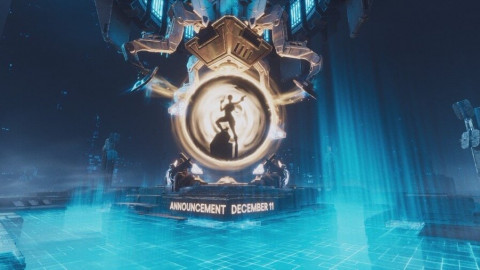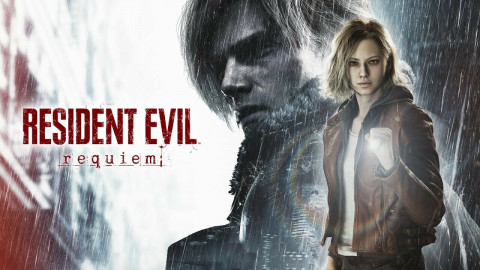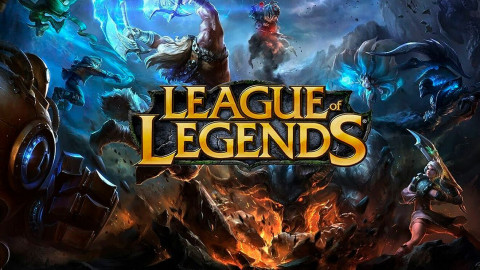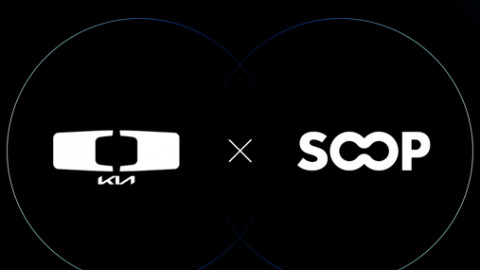
Disclaimer : The following article was written freely based on the author's opinion, and it may not necessarily represent Inven Global's editorial stance.
With Overwatch being one of the most popular games to play in the last year, its esport side has been slowly growing with an ever increasing viewership for the premier tournaments. As such, the games has continuously attracted new viewers from different games, a notable portion of which comes from CS:GO due to both belonging in the FPS genre. The piece aims to provide those fans in particular with more context in regards to the background and stature of the two teams and their players by comparing them to well-known CS:GO teams and players.
The APEX S3 finals is one of the biggest events on the Overwatch calendar until Blizzard's Overwatch League arrives and it featured two of the best Western teams, the international mix of EnVyUs and Rogue's full-French lineup, competing for a first place prize pool of ₩100,000,000 (approx. $88,000). In the end, it all came down to KongDoo Panthera and Lunatic-Hai facing for the third time during the tournament. In the Ro16 Lunatic-Hai bested them in a close 3-2, but Panthera returned the favor with a 3-1 in the Ro8. After dispatching their respective opponents in the semifinal, they'll now battle one final time to determine who is the champion of APEX S3 in a Bo7 series.
Author's note: as a perfect fits would be hard to find, even for someone who is expert in both games, the comparisons are chosen for the specific context that is mentioned in the piece.
If you don't have any experience with Overwatch as a game, reading this [click] piece might assist greatly with understanding the action and its purpose, beyond the flashy particles and the headshots.

KongDoo Panthera (Wakawaka, Luffy, Fissure, Void, birdring, Rascal) - Cloud9, summer 2015 (n0thing, shroud, sgares, Skadoodle, fREAKAZOiD)
In the summer of 2015 a Sean "sgares" Gares-led Cloud9 went on a run of three consecutive international events -- including two located in Europe -- in which they recorded three silver finishes. Within the span of about two weeks they beat a handful of elite teams, and grew to be recognized as one of the best teams in the world. In the time since, other North American squads, e.g. Liquid, OpTic, and even C9's current iteration, have achieved more, but back then, it was as good of a run as any NA CS:GO team had had.
Akin to all NA squads who leave a mark at the global stage the success was predicated on their star players, shroud and Skadoodle, having a good run of form. Unlike any of the other aforementioned lineups, however, they also relied on heavy preparation for specific opponents and a solid playbook of tactics. Skadoodle and shroud were some of the top CS:GO players at the time, arguably the finest NA had to offer, but by no means the best on the international stage.
In a move comparable to Skadoodle's signing with C9, albeit on a smaller scale, this season saw the KongDoo organization transfer birdring between the two sister-teams, from Uncia to Panthera. Uniting him with Rascal put the organization's two best players in the same squad, as well as two of the best Korean damage dealers, on the same team. Yet, the new-look Panthera's success hasn't been predicated solely on their star players. In their wins, the team has showcased a variety of tactics and the ability to play around both of their dealers. The parallels to Sean Gares's boys continue as they've also been reliant on preparing for specific opponents, even to a fault. The opening game of the season showed them crumble and blow a 2-0 lead to lose 2-3, after Lunatic-Hai surprised them with the third map pick. And while Panthera have shown that their playbook is composed of more than a few pages, their ability to adapt to what opponents are doing on the fly has been less than spectacular. The squad has clearly favored sticking to their original plan, rather than attempting a solution they might have not practiced as much. They've had over three weeks to prepare for the match-up against Lunatic-Hai; therefore it is extremely unlikely they'll be lacking in the scouting aspect, but, in both Overwatch and CS:GO, teams with too rigid of a structure who can't adapt mid-game have often been on the losing side, particularly when facing a fluid opponent like Lunatic-Hai.

birdring - coldzera, (Luminosity Gaming, early 2016)
position: damage dealer
The Brazilian Terminator, as he was dubbed by Duncan "Thorin" Shields, burst onto the international scene in the middle of 2015. Only six months later, his gameplay was making a case for him being among the ten best players in the world. The most impressive part was that his impact wasn't predicated on prodigious raw skills. His game was built on a calm and collected approach to the game and a rock-solid decision making. Slowly but surely, in a calculated but rarely passive manner, he was an ever coming threat, taking over the map and the game.
It's been two years now since his addition to the best Brazilian squad, SK Gaming (formerly LG), and he has continued developing his game to the point where he is the clear best player in the world. He has mastered the slow playstyle and imposes his presence on the game with it when seemingly every other superstar favors the aggressive and explosive approach to the game. Additionally, he is one of the better secondary AWP players, allowing his team to set up one of the deadliest double AWP set-ups CS:GO has ever seen.
However, coldzera he wasn't always the dominant force he is now. In early 2016, his AWPing was much more situational than it is now, despite delivering one of the most exciting CS:GO plays to date with the weapon. And even though his style of play was very much the same and even the top teams were much less stacked in terms of talent, he was less effective at the time.
coldzera crushing team Liquid with an AWP on Mirage.
birdring -- the primary star of KongDoo Panthera -- is a similar, brains over brawn, type of player. Just like SK's superstar he has impressive raw skills, but isn't even close to being the best in the world, at least when it comes to that. Instead, he relies on stellar positioning and seemingly infallible game sense to deliver devastating flanks and create picks without much assistance from his teammates. Originally, during APEX S1, he was the second star of Panthera's sister team, Uncia. Yet, similarly to how coldzera climbed the rankings for best individual performers after joining Luminosity, so has birdring done at a surprising pace during the second and third seasons of APEX.
Why compare him to an earlier version of coldzera then, if he is so devastating?
The first reason is quite obvious, he is not yet the best, or even most effective, player in the world -- even if he is arguably the most efficient. birdring is the one to die the least on Tracer, by far his most played hero, while scoring an above average amount of kills and being responsible for a significant portion of his team's kills. To put it in simpler terms, he gives up very little to the opponents while still getting in return more than most. Still, as those stats suggest, he is not quite deadly enough for the author to consider his play comparable to coldzera's current level. Unlike the Brazilian, birdring's impact, regardless of whether it's judged utilizing stats sheets or the eye test -- is still eclipsed by other other primary -- and more aggressive -- stars. One more knock on his play is that, akin to how the Brazilian Terminator wasn't as adept at handling the AWP in that part of his career, birdring isn't as proficient with projectile heroes as he is with hitscan ones. He is master of the latter, both long and close-ranged ones, as well as the off-tank hero Roadhog, but when it comes to projectile play he hasn't been as impressive. Even his dangerous Genji isn't at the level other top players of the hero have shown.
By no means does this mean that he is a bad player. It might affect Panthera's chances of winning the final, but considering birdring's arc as an individual performer and his playstyle, it is not at all unlikely that in an year Overwatch fans will talk about his play in the same manner CS:GO fans do about coldzera's right now.

Rascal and Void - shroud and fREAKAZOiD (C9, summer 2015)
positions: damage dealer and off-tank
Nowadays, shroud is almost universally thought of as a player who failed to realize his full potential at the professional level, but back in 2015, he was the squad's second best player and an important element of C9's summer run. Notably, he was particularly instrumental in their win against Fnatic, who was at the time the best team in the world, and is nowadays widely recognized as the greatest five-men line-up CS:GO has seen. Similarly to him, Rascal's performances have been somewhat up and down, but he has shown up in the important games and even gave Panthera a chance to win the season's opening game against Lunatic-Hai.
Void is filling the fREAKAZOiD role in the team, even though the Korean is more skilled when each of the two is compared to their peers. Both favor doing what the strategy and specific tactics requires of them so they can enable the rest of their team to do the heavy lifting. Yet, as the big man had his moments of running into site first and taking heads to bust it wide open for his team, so has Void produced a multitude of memorable moments. Most exciting highlight reels by the off-tank player involve him taking down multiple enemies with D.Va's Self-destruct, an ultimate ability which is incredibly hard to score kills with, especially so without assistance. An additional, and less important, parallel to draw is that Void joined the team before APEX S3 with birdring as a roleplayer accompanying the star and fREAKAZOiD did the same when he joined C9 alongside Skadoodle.

Fissure and Wakawaka - apEX and NBK (G2)
positions: main tank and support
When Fissure joined the squad, the immediate quality that became obvious about his play is the raw aggression. Whenever it works, he seemingly wins engages single-handedly without even having to resort to ultimate abilities. When his aggression flopps though, it does so in a remarkable manner with him having barely any impact. In such situations, his thirst for action makes the game seem as if Panthera is playing 5v6. And while the French entry fragger has refined his play, subdued his relentless aggression slightly and developed a strong defensive game, Fissure is yet to showcase the ability for playing a way other than full throttle.
Wakawaka, likewise shares some similarities with NBK. Both began their careers as a star player of sorts: NBK as a lurker in VeryGames, Wakawaka as the damage dealer and tertiary carry in Panthera's earlier iterations. Yet, as their careers progressed both showed a strong affinity for supportive play to switch up their style and Wakawaka his position. Whether or not the Korean player will also be able to reach similar levels of success as a result of the decision to change his position is still unclear, but purely in terms of gameplay he's definitely got a bit of the Frenchman in himself.

Lunatic-Hai (tobi, ryujehong, Miro, zunba, EscA, Gido) - Astralis, 2017 (dev1ce, dupreeh, Xyp9x, Kjaerbye, gla1ve)
Since their emergence onto the international scene last autumn at APAC, Lunatic-Hai have been the most successful Korean team with their two silver finishes at offline events and the APEX S2 championship to their name. In that manner, as well as in the playstyle they utilized only as far back as three to four months ago, they are more similar to Fnatic's 2015 line-up. Both squads relied heavily on their superb fire-power and teamplay mixed in with some tactics and the ability to switch-up their playstyle based on who is playing well.
However, since WHORU stepped down from the starting line-up, Korea's favorite team has been showing more similarities to the Danes of Astralis. They've grown more patient than ever and implemented into their game a slew of prepared executes. WHORU was the focal point of the team and despite failing to diversify his hero pool, him stepping down has hurt their ability to challenge other squads directly based on skill. Yet, akin to gla1ve's and co., they are now seemingly able to make the most out of everybody's talents and just about everyone contend even with the likes of KongDoo Panthera and Afreeca Freecs Blue who've been stacking talent since APEX S1 -- admittedly, in attempts to challenge Lunatic-Hai's core of superstars in the supportive positions.

ryujehong and Miro - olofmeister and flusha (Fnatic 2015)
positions: support and main tank
In 2014 and 2015, olofmeister stunned the CS:GO world with his incredible run of form. He was the best player on the planet for a significant portion of the sixteen months which the greatest CS:GO line-up to date lasted. Not only did he dominate servers, but he did it from a position where he had to work for his own kills, rather than have his team directly set him up and make his job easier as many teams tend to do for their stars. What amazed even more is that this run didn't go without him experiencing dips in terms of performance. His level would drop down from the amazing heights, referred to by many as 'God mode', but unlike many other superstar players he was able to find it within himself to get it back up.
In similar manner, ryujehong plays an instrumental part as the overall best player of the team looking like it is about to become the first all-time great in professional Overwatch. Since Lunatic-Hai's emergence on the international stage, the 25-years-old has been one of the best supports in the world. Some have shown themselves able to deliver the the same high-level performances for a time and others have surpassed him in terms of consistency, but no other support has been able to have the same impact with the regularity he does over a prolonged period of time. This earned him the MVP for the team's first gold at APEX S2 and put him as a strong favorite in the conversation for the best player in the world. Just like the Swede had dips of form, so has ryujehong had series in which he doesn't mean the expectation he set-up for himself, but has shown himself capable of returning to high levels sooner rather than later.
When it comes to skill sets, the Korean superstar's versatility is once again comparable to his Swedish CS:GO counterpart. His raw ability to track and flick onto opponents are fantastic tracking, as evident by his limited time on non-support heroes, but he truly shines with projectile-based characters. Only the Frenchman uNKOE has been able to rival ryujehong when it comes to predicting others' location in future and even he has shown less consistency in the long-term.
"I want to be a player that people will remember for a long time." -ryujehong for InvenGlobal
And while olofmeister's aggressive play created a lot of opportunities for Fnatic to win matches, it was flusha's slower-paced and more calculated approach to the game that often closed the deal. In a similar manner, it has been the collaboration between ryujehong's playmaking from the support position and Miro's more calculated tank play that wins Lunatic-Hai a significant portion of their games, especially since WHORU stepped down. Miro's position makes it hard to be directly comparable to flusha's lurking, but his ability to stay alive and a bagful of tricks, makes him just as annoying and deadly as an unexpected flank by the Swede.
A key difference between the two is that Miro's shown that he's able to be not only the primary carry of a team, but also the focal point. Before APEX S2, he was the team's primary threat but the majority of the resources went to an overly aggressive EscA. After WHORU was replaced by Gido, he took over the lion's share of resources to increase his impact even further and the results for the team have been similarly good, as they once again find themselves in the final of an elite-level offline event.
Going into the match on Saturday, most factors point toward Lunatic-Hai being outmatched as KongDoo Panthera defeated them comfortably in the Ro8 meeting and have only stepped up since. Yet, if ryujehong and Miro are to fully live up to the comparison with the CS:GO legends, they'll need to step up even more for a win comparable to Fnatic's inspired run at ESL One: Cologne 2015, when they were no longer the best team in the world, but won regardless.

tobi, zunba and EscA - fer (LG and SK 2016), Xyp9x (Dignitas, TSM and Astralis) and kioShiMa (FaZe 2017)
positions: support, off-tank and damage dealer
Nowadays, fer is one of the best starplayers in CS:GO, but what allows to draw parallels between him, Xyp9x, tobi and zunba is that last year he sacrificed his own individual performances for the sake of getting wins. Akin to him, the Danish CS:GO clutch-master has the skills to be a primary or a secondary star of a top team, but instead he's filling the gaps in the positions left after his teammates had their picks. tobi's aggressive playmaking and the fact that he used to be a DPS player before becoming a support allow for a direct comparison to fer's pushes. Just like ryujehong, tobi doesn't allow the natural boundaries of the support role to dictate his playstyle or the amount of damage he deals to the opponents.
zunba's approach on the other hand is closer to what CS:GO fans see from Xyp9x, even though in APEX S1 he was the star player of another, lower level, team. Since then, however, the off-tank has taken a lot more supportive approach to the game. He focuses almost entirely on protecting his teammates and being a cog in the Lunatic-Hai system, instead of looking to showcase his skills and create material for highlight reels.
EscA's situation is a lot more comparable to kioShiMa's. Once upon a time a star player, the French had to retool his game to being a fit-in type of player, after being unceremoniously cut from EnVyUs. He has been successful in his new role and had multiple inspired performances. Yet, kioShiMa is yet to prove that he can still deliver MVP level performances at any consistent rate to make it worth giving him the resources. EscA didn't get ostracized from his team, but was briefly benched and had it not been for out-of-game controversy surrounding other players, he might have still not been back as a starter. When he returned, he was no longer the focal point of the teams' strategies, nor a beneficiary of the majority of the resources. This diminished his impact greatly, but over time, just like the Frenchman, he slowly improved and found his groove in picking whatever heroes the tactics require, filling a needed role rather than doing all the killing. Similarly to kioShiMa, EscA has shown several good performances, but nothing close to suggesting the team can be once again effective with him at the helm.

Gido - bodyy (G2 2016)
position: damage dealer
When bodyy joined G2 last year he found himself in quite the difficult situation. He boasted limited experience at tier 2 and none at the highest level of competition. Yet, seemingly the impossible was expected of him as he had to fit as a role-player in an already established team, aspiring to challenge for tier 1. To top it off, G2's in-game leader (shot-caller in Overwatch terms) was the charismatic but not too experienced -- or a player thought of as a good fit -- in the IGL role, fan-favorite shox. To the latter's credit, he did a better job than anyone expected of calling the shots around himself and ScreaM, but that didn't make bodyy's job much easier. He had to fit himself in the leftover roles and positions while playing against opponents he had barely any previous experience against. Many expected a spectacular failure, similar to the one EnVyUs' time with DEVIL was, but the young blood surprised. For the first few months he did good enough job not to draw criticism from either fans or colleagues and by the end of that G2 iteration he had made enough of an impression to join the new French superteam.
Gido's position this season has been even harder than what his CS:GO counterpart experienced. He joined the team as a substitute player with limited experience in competitive play, directly comparable to what bodyy got in LDLC. However, unlike G2, Lunatic-Hai were the reigning APEX champions and the best team in the world. After one match, the team's focal point and fan-favorite Genji specialist, WHORU, got benched in favor of the rookie. Fortunately for him, he didn't have to take directly over his predecessor's role as it was Miro who took over the lion's share of the resources. It has been almost two months now since Gido stepped up to the main roster and while he hasn't exactly lit the world on fire he's been by no means an obvious weakness or a freeloader.
You can watch the tournament on July 29th, 19:00 KST (time zone converter) on twitch.tv/ognglobal or twitch.tv/ogn_ow, should you prefer your Overwatch in Korean.

If you have any further questions in regards to the match-up, you are more than welcome to ask us on twitter at @InvenGlobal and @RadoNonfire!
Sort by:
Comments :0






